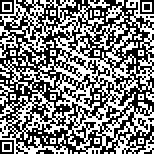| This article has been:Browse 1991Times Download 2496Times |

scan it! |
|
|
| DOI:10.13522/j.cnki.ggps.20180278 |
|
| Combined Impact of Irrigation and Nitrogen Application at the Jointing Stage on Water Consumption and Water Use Efficiency of Winter Wheat |
|
ZHANG Xiaopei, WANG Hezhou, ZHOU Xinguo, YANG Shenjiao, CHEN Jinping, LIU Anneng
|
|
1. Farmland Irrigation Research Institute, Chinese Academy of Agricultural Sciences, Xinxiang 453002, China; 2. National Agro-ecological System Observation and Research Station of Shangqiu, Shangqiu 476000, China
|
| Abstract: |
| 【Objective】 Water consumption and its use efficiency by crops depend on a variety of biotic and abiotic factors and the purpose of this paper is to experimentally study how they are affected by combined application of water and nitrogen at the jointing stage of winter wheat. 【Method】 The experiment was carried out in a field considering of three irrigation treatments: 90 mm (W1), 60 mm (W2), no irrigation (W3); and three nitrogen applications: 300 kg/hm2 (N1), 225 kg/hm2 (N2) and 150 kg/hm2 (N3). 【Result】 When the amount of irrigation increased from 0 to 90 mm, the overall water consumption increased from 67 mm to 106 mm with the contribution of precipitation and soil water decreasing while of the irrigation increasing. Increasing nitrogen fertilizer application reduced the contribution of irrigation and precipitation to water consumption, with the difference compensated from soil water which increased from 1.6%~4.9% to 8.3%~9.9% as the nitrogen fertilizer increased from 150 kg/hm2 to 300 kg/hm2. Irrigation and fertilization at the jointing stage increased water consumption at the joining-maturing stage by 7.4%~63.5%. The overall water use efficiency, soil water use efficiency and irrigation water use efficiency decreased as the amount of irrigation increased, but increased with nitrogen fertilizer. For example, in W1, the above three water use efficiencies increased by 18.18%~22.98%, 24.66%~26.32% and 24.68%~26.34% respectively as the N fertilizer increased; these also applied to W2 and W3 except soil water whose use efficiency decreased with the increase in fertilizer application. 【Conclusion】 We conclude from our experiment that 90 mm of irrigation together with 225 kg/hm2 of nitrogen fertilization, or 60 mm of irrigation and 300 kg/hm2 of nitrogen fertilization at the joining stage is the optimal combination to achieve high yield and in the meantime improve water use efficiency. |
| Key words: winter wheat; water use efficiency; irrigation; nitrogen |
|
|